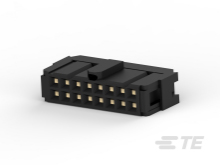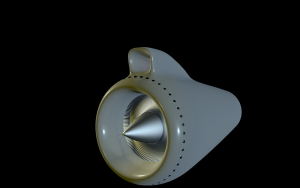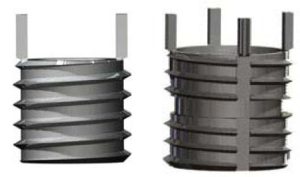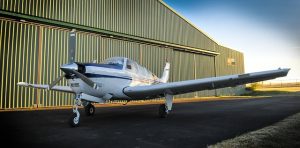
If you ever step into the cockpit of a light piston airplane, you may discover that it has an exhaust temperature gauge. Also known as an EGT gauge or EGT sensor, it reveals the temperature of the airplane’s exhaust gases. Why do airplanes have an exhaust temperature gauge exactly?
What Is an Exhaust Temperature Gauge?
An exhaust temperature gauge is an indicator or gauge that reveals the temperature of a vehicle’s exhaust gases. They are found in certain types of automobiles as well as certain types of airplanes — specifically light piston airplanes.
Light piston airplanes are powered by one or more combustion engines. They use reciprocating engines to burn a mixture of fuel and air. This burning or “combustion” process creates hot exhaust gases while simultaneously turning one or more propellers. Exhaust temperature gauges reveal the temperature of the reciprocating engines’ exhaust gases.
Monitor Air-to-Fuel Ratio
With an exhaust temperature gauge, pilots can monitor the airplane’s air-to-fuel ratio. Like all combustion engines, reciprocating engines burn a combination of fuel and air. But the amount of air relative to the amount of fuel they burn may vary. The air-to-fuel ratio reveals this information.
Set Air-to-Fuel Mixture
Pilots use the exhaust temperature gauge to set the airplane’s air-to-fuel mixture. Reciprocating engines can run too lean, or they can run too rich. Lean-running engines burn too much air and too little fuel, whereas rich-running engines burn too much fuel and too little air. By monitoring the exhaust temperature gauge, pilots can set the airplane’s air-to-fuel mixture so that it doesn’t run lean or rich.
It’s important to note that not all piston airplanes support manual air-to-fuel mixtures; some of them set the air-to-fuel mixture automatically, meaning the pilot has little or no control over how much air and fuel the engines burn
Prevent Overheating
Another reason airplanes have an exhaust temperature gauge is to prevent overheating. Reciprocating engines can sustain critical damage if they get too hot. Changing the air-to-fuel mixture, however, can regulate the engine temperature so that it doesn’t overheat. A higher ratio of air-to-fuel, for instance, will typically result in cooler exhaust gases.
In Conclusion
Many light-piston airplanes are equipped with a monitoring device known as an exhaust temperature gauge. It works by measuring the temperature of the hottest engine cylinder. Pilots use this gauge to monitor the air-to-fuel ratio, set the air-to-fuel mixture, and to prevent overheating.
- SEO Powered Content & PR Distribution. Get Amplified Today.
- PlatoData.Network Vertical Generative Ai. Empower Yourself. Access Here.
- PlatoAiStream. Web3 Intelligence. Knowledge Amplified. Access Here.
- PlatoESG. Carbon, CleanTech, Energy, Environment, Solar, Waste Management. Access Here.
- PlatoHealth. Biotech and Clinical Trials Intelligence. Access Here.
- Source: https://monroeaerospace.com/blog/why-airplanes-have-an-exhaust-temperature-gauge/
- :has
- :is
- :not
- 225
- 300
- a
- AIR
- Airplane
- Airplanes
- All
- also
- amount
- an
- and
- ARE
- AS
- automatically
- automobiles
- burn
- burning
- but
- by
- CAN
- certain
- changing
- Cockpit
- combination
- control
- creates
- critical
- damage
- device
- discover
- do
- Doesn’t
- EGT
- Engine
- Engines
- equipped
- EVER
- exactly
- For
- found
- Fuel
- gauge
- get
- Have
- High
- higher
- HOT
- hottest
- How
- However
- HTTPS
- if
- important
- in
- Indicator
- information
- instance
- into
- IT
- jpg
- known
- light
- like
- little
- manual
- max-width
- May..
- meaning
- measuring
- mixture
- Monitor
- monitoring
- more
- much
- no
- note
- of
- ONE
- or
- over
- pilot
- Pilots
- plato
- Plato Data Intelligence
- PlatoData
- powered
- prevent
- process
- ratio
- reason
- Regulate
- relative
- result
- reveal
- Reveals
- Rich
- Run
- set
- simultaneously
- So
- some
- specifically
- Step
- support
- that
- The
- Them
- they
- this
- to
- too
- Turning
- types
- typically
- use
- vary
- WELL
- whereas
- while
- why
- will
- with
- works
- you
- zephyrnet












